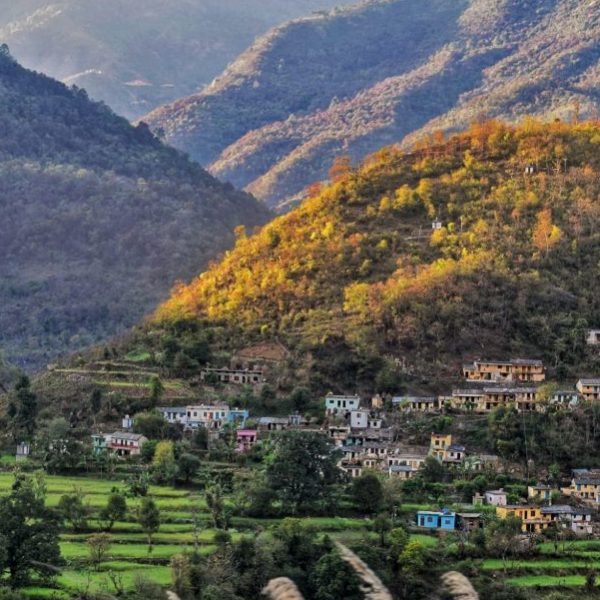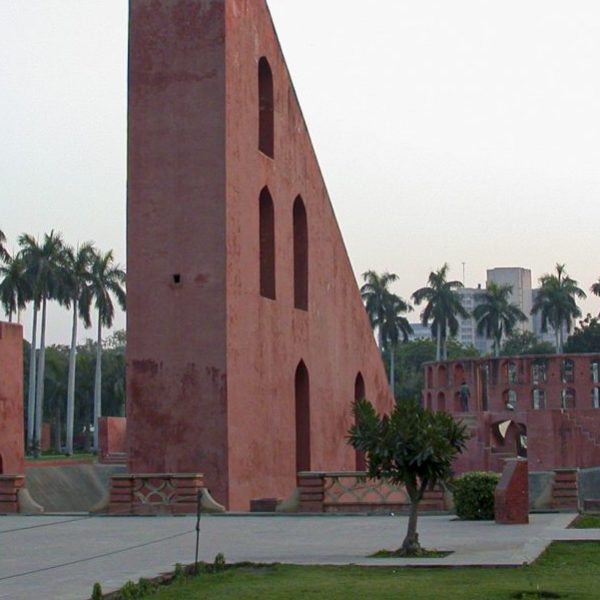The Monastery at Ranod: Exploring The Remains of Medieval India
Today, we are very proud to publish an important new book – Tamara Sears’s Worldly Gurus and Spiritual Kings: Architecture and Asceticism in Medieval India, the first full-length study of the matha, or Hindu monastery, which developed in India at the turn of the first millennium. In the course of her years of research, Tamara Sears traveled to remote areas in India; here, she shares with us some recollections and photos of one of her journeys.
Tamara Sears—
In August of 1999, I traveled to central India to visit a long-abandoned Hindu monastery in the remote village of Ranod, situated off the beaten path in the modern state of Madhya Pradesh. It was, by no means, a well-known site; I had become aware of its existence primarily through colonial-era archaeological reports and essays on inscriptions. These linked Ranod to a larger network of interconnected monasteries associated, long ago, with a prominent lineage of Śiva-worshipping ascetics known as the Mattamayūras, or literally the “Drunken Peacocks”. Armed only with my camera, a notebook, and a few maps, I set out early in the morning in a large, diesel-burning Ambassador, piloted by a driver from Gwalior and accompanied by a local who agreed to serve as a guide. We traveled for hours along rural highways and kaccha, or “half-baked,” roads, and arrived just in time witness the blackening of the sky and the onset of the monsoon rains, which was turning the local roads into rivers, and my path into pools of mud. I ventured off nonetheless, leaving the car behind and dragging my surprisingly good-natured companions through thigh-deep water to capture my first glimpse of the monastery, which emerged, almost magically, from behind a newly lush landscape of high grass, chickpea fields, and trees.
The beauty of Ranod’s landscape, which spurred me forward even in the wake of the monsoon rains, was not lost on earlier visitors to the monastic site. Traveling in 1864-65, Alexander Cunningham, the first director general of the Archaeological Survey of India, admired the “remarkable building” that he mistook for a palace but was, in fact, the monastery, whose architecture he deemed worthy of comparison to that of the Greeks. The setting was similarly notable, filled with “magnificent groves of old tamarind, mango, and other trees,” that made Ranod, in his opinion, “one of the prettiest places in this part of the country.”[1] Indeed this lushly verdant forest may have been what initially drew the monastery’s makers to the site, which was described in an inscription still visible in situ as a “forest for austerities” (tapovana), known by the name of Araṇipadra, literally denoting a “wilderness village.”[2] Appropriately the monastery was originally designed, likely in the ninth century by a guru named Purandara, as a light and airy retreat which was expanded significantly through renovations undertaken in the late tenth or early eleventh century by the sage Vyomaśiva. The enlarged complex consisted of small free-standing buildings arranged around a large internal court, with shaded verandas facilitating the circulation of light and air, and, on the upper stories, providing views of the trees rising up beyond enclosing walls. Just outside the monastery’s main entrance was a large stepped tank which was described in extensive detail in the monastery’s attached inscription. In the text, the resident sages were likened to actual “peacocks” who had made their abode next to the tank, which was poetically described as “the supreme abode of bliss, (made) lovely with palatial buildings and old shrines suitable for [the god] Śiva.”[3]
The poetic quality of the Sanskrit verses inscribed at Ranod and the careful design of the monastic complex make it clear that although Ranod was intended as a retreat for ascetics, it also carried a significant royal imprint. In fact, the Mattamayūra’s rise to prominence was integrally tied to their ability to garner patronage and to ally themselves with local and regional kings. Still a relatively obscure religious order in the ninth century, by the tenth and eleventh, the Mattamayūras had developed a vast range of monastic centers extending across north and central India, and their preceptors took on important political roles as Raja-gurus, or gurus to kings. Their popularity derived, in part, through their affiliation with a strand of medieval Hinduism known as Śaiva Siddhānta, or the “fully completed Śaivism,” which remains one of the most widespread forms of Śiva worship in modern India, where it is particularly associated with the southern state of Tamil Nadu.[4] The growing influence of Śaiva Siddhānta across the Indian subcontinent, and of the Mattamayūras more regionally in north and central India, came to a fore in the centuries just following the turn of the first millennium. It was during this period that many monasteries were founded in both rural enclaves, such as Ranod, and at larger political centers. A good case in point can be seen not far from Ranod, in the village of Kadwāhā, where the monastery served as the hub of a growing temple town. Unlike at Ranod, the monastery at Kadwāhā was a deeply interiorized and “fortress-like” building, which created an appropriately sequestered environment in the midst of a growing population.
Because very few Hindu monasteries from medieval India are known to us through anything other than textual sources, the buildings at Kadwāhā and Ranod are not merely remarkable in terms of their design, but in terms of the fortuity of their survival. They remain crucial remnants of an architectural tradition that might otherwise be lost. In introducing sites such as Ranod into a globalizing art historical canon, Worldly Gurus and Spiritual Kings represents multiple acts: of rediscovery, recovery, documentation, and reanimation. It brings to light the surviving monasteries as they appear today, and it reimagines the larger, living world of which they were once part. This was a world in which the renunciatory realm of forest ascetics became inextricably integrated with the worldly affairs of local lords and prominent kings, and in which buildings derived meaning not only through form but through lived presence. In order to capture the vibrant lives of monastic buildings, I looked to textual sources, including architectural treatises and ritual manuals, and I though carefully about how architectural spaces encouraged distinct patterns of movements. By working back and forth between architectural form and religious context, Worldly Gurus and Spiritual Kings, reimagines the lives of the gurus who presided over monasteries and of the kings and lay devotees who came as visitors for special rituals or festive events. In addition, it reaches diachronically to chronicle also colonial-era encounters by individuals, such as Alexander Cunningham and Mahārāja Madho Rao Scindia (b. 1876-1925) of Gwalior, and the present-day communities that continue to animate archaeological sites.
[1] Alexander Cunningham, Four Reports Made During the Years 1862-63-64-65, vol. 2 (Simla: Government Central Press, 1871), 303-304.
[2] Ranod inscription, verse 15.
[3] Ranod inscription, verse 51.
[4] Richard Davis’s Ritual in an Oscillating Universe (Princeton: Princeton University Press, 1991) presents a very accessible introduction and analysis of the ritual world of Śaiva Siddhānta, particularly drawn from medieval South Indian sources.
Tamara I. Sears is assistant professor of South Asian art and architectural history at Yale University.





























